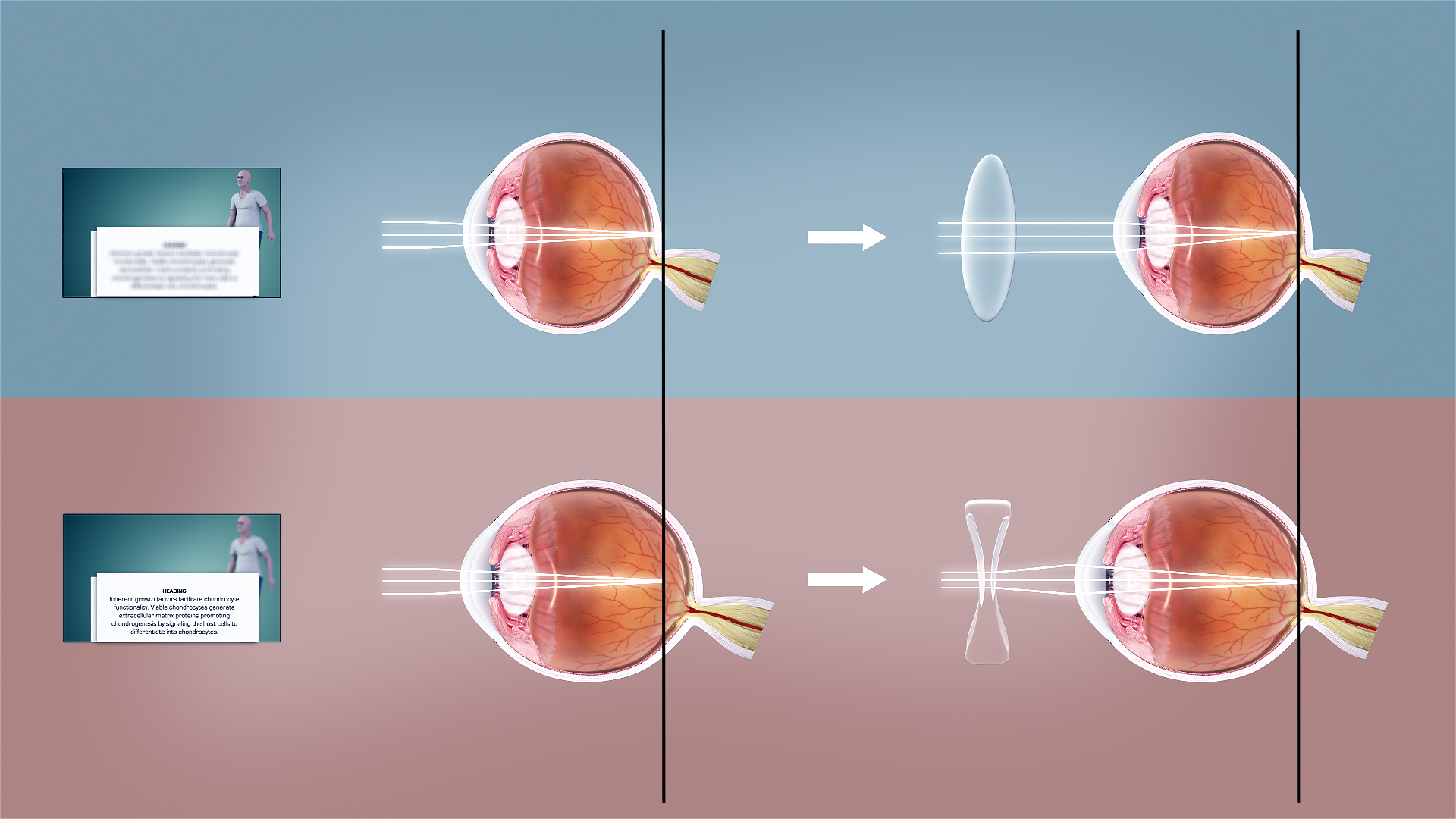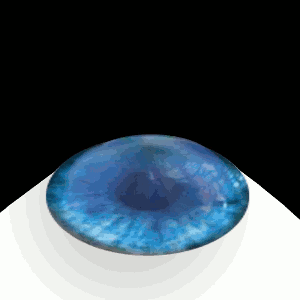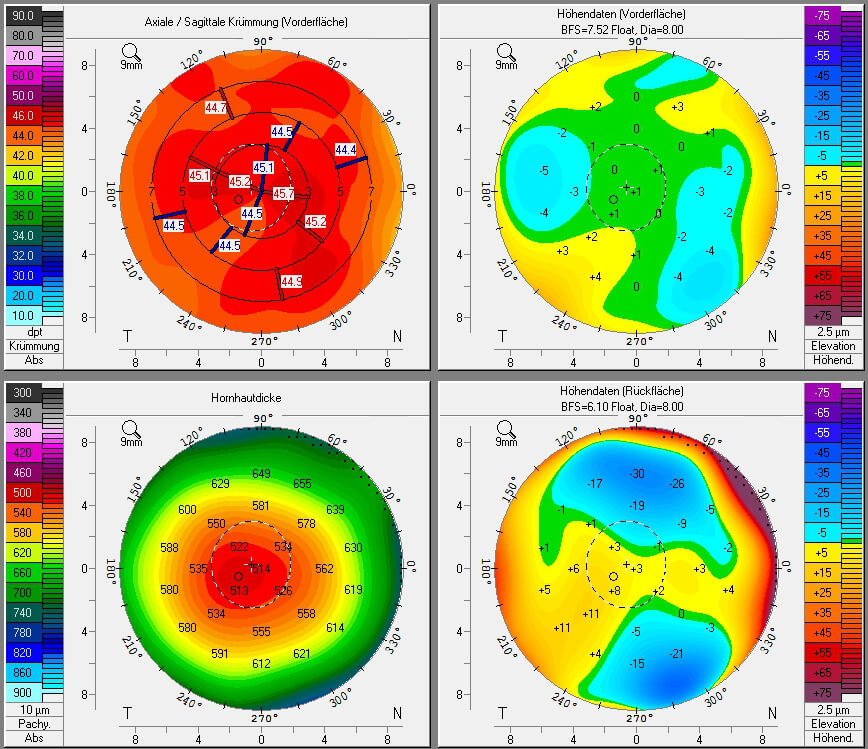|
Automated Lamellar Keratoplasty
Automated lamellar keratoplasty (ALK), also known as keratomileusis in situ, is a non-laser lamellar refractive procedure used to correct high degree refractive errors. This procedure can correct large amounts of myopia and hyperopia. However, the resultant change is not as predictable as with other procedures. Procedure ALK uses a device called a microkeratome to separate a thin layer of the cornea and create a flap. The eye is anesthetized and a ring is fixed to it in order to keep it properly positioned and flat. The microkeratome then makes a small incomplete flap across the cornea by cutting across it. While still attached at one side, the corneal flap is folded back to reveal a sub layer of cornea. At this point, the microkeratome is precisely readjusted to match the calculated cut depth for the patient's vision correction. The calculation is based on the patient's glasses and contact lens prescriptions. The surgeon then passes the microkeratome completely over the eye mak ... [...More Info...] [...Related Items...] OR: [Wikipedia] [Google] [Baidu] |
Refractive Error
Refractive error, also known as refraction error, is a problem with focusing light accurately on the retina due to the shape of the eye and or cornea. The most common types of refractive error are near-sightedness, far-sightedness, astigmatism, and presbyopia. Near-sightedness results in far away objects being blurry, far-sightedness and presbyopia result in close objects being blurry, and astigmatism causes objects to appear stretched out or blurry. Other symptoms may include double vision, headaches, and eye strain. Near-sightedness is due to the length of the eyeball being too long, far-sightedness the eyeball too short, astigmatism the cornea being the wrong shape, and presbyopia aging of the lens of the eye such that it cannot change shape sufficiently. Some refractive errors occur more often among those whose parents are affected. Diagnosis is by eye examination. Refractive errors are corrected with eyeglasses, contact lenses, or surgery. Eyeglasses are the easie ... [...More Info...] [...Related Items...] OR: [Wikipedia] [Google] [Baidu] |
Microkeratome
A microkeratome is a precision surgical instrument with an oscillating blade designed for creating the corneal flap in LASIK or ALK surgery. The normal human cornea varies from around 500 to 600 micrometres in thickness; and in the LASIK procedure, the microkeratome creates an 83 to 200 micrometre thick flap. This piece of equipment is used all around the world to cut the cornea flap. The microkeratome is also used in Descemet's stripping automated endothelial keratoplasty (DSAEK), where it is used to slice a thin layer from the back of the donor cornea, which is then transplanted into the posterior cornea of the recipient. It was invented by Jose Barraquer José Ignacio Barraquer Moner (24 January 1916 – 13 February 1998) was a Spanish ophthalmologist and inventor born in Barcelona who did most of his life's work in Bogotá, Colombia. His original pioneering investigations on corneal trans ... and Cesar Carlos Carriazo in the 1950s in Colombia. See also * Instruments ... [...More Info...] [...Related Items...] OR: [Wikipedia] [Google] [Baidu] |
Anesthetized
Anesthesia is a state of controlled, temporary loss of sensation or awareness that is induced for medical or veterinary purposes. It may include some or all of analgesia (relief from or prevention of pain), paralysis (muscle relaxation), amnesia (loss of memory), and unconsciousness. An individual under the effects of anesthetic drugs is referred to as being anesthetized. Anesthesia enables the painless performance of procedures that would otherwise cause severe or intolerable pain in a non-anesthetized individual, or would otherwise be technically unfeasible. Three broad categories of anesthesia exist: * General anesthesia suppresses central nervous system activity and results in unconsciousness and total lack of sensation, using either injected or inhaled drugs. * Sedation suppresses the central nervous system to a lesser degree, inhibiting both anxiety and creation of long-term memories without resulting in unconsciousness. * Regional and local anesthesia, which blocks ... [...More Info...] [...Related Items...] OR: [Wikipedia] [Google] [Baidu] |
LASIK
LASIK or Lasik (''laser-assisted in situ keratomileusis''), commonly referred to as laser eye surgery or laser vision correction, is a type of refractive surgery for the correction of myopia, hyperopia, and an actual cure for astigmatism, since it is in the cornea. LASIK surgery is performed by an ophthalmologist who uses a laser or microkeratome to reshape the eye's cornea in order to improve visual acuity. For most people, LASIK provides a long-lasting alternative to eyeglasses or contact lenses. LASIK is very similar to another surgical corrective procedure, photorefractive keratectomy (PRK), and LASEK. All represent advances over radial keratotomy in the surgical treatment of refractive errors of vision. For patients with moderate to high myopia or thin corneas which cannot be treated with LASIK and PRK, the phakic intraocular lens is an alternative. As of 2018, roughly 9.5 million Americans have had LASIK and, globally, between 1991 and 2016, more than 40 million proced ... [...More Info...] [...Related Items...] OR: [Wikipedia] [Google] [Baidu] |
Photorefractive Keratectomy
Photorefractive keratectomy (PRK) and laser-assisted sub-epithelial keratectomy (or laser epithelial keratomileusis) (LASEK) are laser eye surgery procedures intended to correct a person's vision, reducing dependency on glasses or contact lenses. LASEK and PRK permanently change the shape of the anterior central cornea using an excimer laser to ablate (remove by vaporization) a small amount of tissue from the corneal stroma at the front of the eye, just under the corneal epithelium. The outer layer of the cornea is removed prior to the ablation. A computer system tracks the patient's eye position 60 to 4,000 times per second, depending on the specifications of the laser that is used. The computer system redirects laser pulses for precise laser placement. Most modern lasers will automatically center on the patient's visual axis and will pause if the eye moves out of range and then resume ablating at that point after the patient's eye is re-centered. The outer layer of the cor ... [...More Info...] [...Related Items...] OR: [Wikipedia] [Google] [Baidu] |
Astigmatism
Astigmatism is a type of refractive error due to rotational asymmetry in the eye's refractive power. This results in distorted or blurred vision at any distance. Other symptoms can include eyestrain, headaches, and trouble driving at night. Astigmatism often occurs at birth and can change or develop later in life. If it occurs in early life and is left untreated, it may result in amblyopia. The cause of astigmatism is unclear; however, it is believed to be partly related to genetic factors. The underlying mechanism involves an irregular curvature of the cornea and protective reaction changes in the lens of the eye, called lens astigmatism, that has the same mechanism as spasm of accomodation. Diagnosis is by an eye examination called autorefractor keratometry (objective, allows to see lens and cornea components of astigmatism) and subjective refraction, but subjective methods are almost always inaccurate, if lens astigmatism is not fully removed first with a week of ... [...More Info...] [...Related Items...] OR: [Wikipedia] [Google] [Baidu] |




.png)